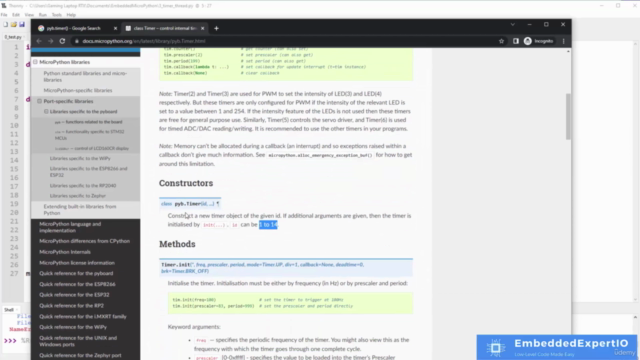Embedded MicroPython from Ground Up™
Develop Embedded Drivers and Firmware using the Python Programming Language
4.61 (64 reviews)

850
students
10 hours
content
May 2023
last update
$69.99
regular price
What you will learn
Develop Embedded Drivers and Firmware using the Python Programming Language
Mix Python with C/C++
Develop General Purpose Input/Output (GPIO)Drivers
Develop Power Management Drivers
Develop General Purpose Timer Drivers
Develop Timer Output Compare Drivers
Developer Timer Input Capture Drivers
Develop PWM Timer Drivers
Develop RealTime Clock (RTC) Drivers
Develop Watchdog Timer (WDG) Drivers
Develop Analog-to-Digital Converter(ADC) Drivers
Develop Analog-to-Digital Converter (ADC) Time Triggered Drivers
Develop Digital-to-Analog Converter (DAC) Drivers
Develop Universal Asynchronous Receiver/Transmitter (UART) Drivers
Develop Serial Peripheral Interface (SPI) Drivers
Develop Inter -Integrated Circuit (I2C) Drivers
Screenshots




Related Topics
4848480
udemy ID
8/24/2022
course created date
9/7/2022
course indexed date
Bot
course submited by